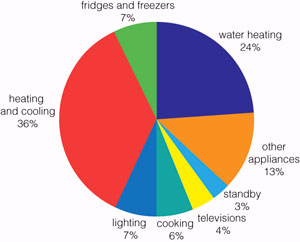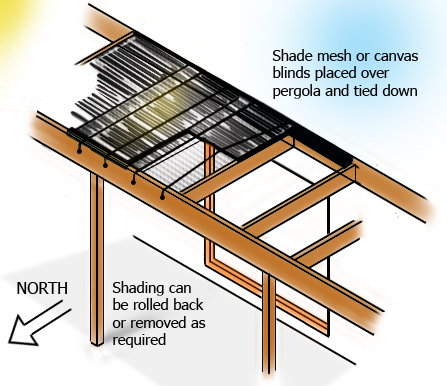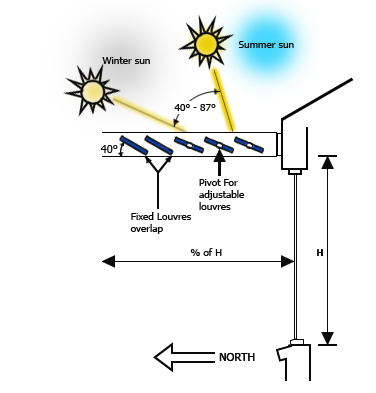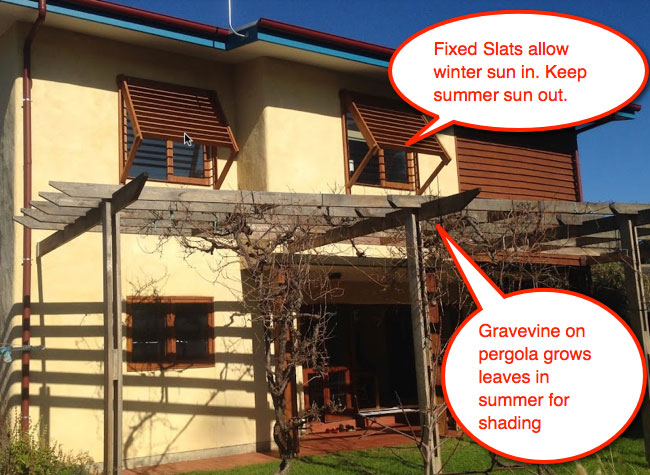Heating and Cooling: Your Number 1 Energy Efficiency Priority
Looking at my favorite pie chart of typical Australian residential energy usage:

It is obvious that heating/cooling is the biggest problem we have to tackle in our quest to make our homes more energy efficient.
Now, you can pay an ‘energy efficiency expert’ to visit your home and advise you on all this, but to be honest with you – it really is not rocket science.
So here’s my Dummies Guide to making your home thermally efficient throughout the year:
1) In summer you want your house cooler than outdoors (Duh!) To achieve this as efficiently as possible you need to do the following:
a) stop heat getting in the house
b) expel any heat that does find its way into your house
and
c) stop cool air getting out of the house
2) In winter you want the inside to be hotter than the outside (told you it wasn’t rocket science).
You do this by:
a) letting as much sun possible in
b) letting as little heat as possible get out
That’s it.
So how can you do this as economically as possible? Well here’s a check list for you:
1) Let’s start with keeping the summer sun out and letting the winter sun in.
A lot of people try to do this with internal blinds. Which is a bad idea.
By the time the sun has come through the window and hit your blind, all the sun and it’s heat has already got into the house.
You need to block the sun before it gets through the glass. So how about those popular external roller shutters? Well apart from making your house look like a prison, they block out all the light too! So you need your lights on in the middle of the day. Plus you end up more miserable than a Pommie in midwinter with no daylight into your house to warm your soul.
The best solution is to simply put well designed eaves over the north facing windows.
These two simple DIY designs will let lots of beautiful indirect sunlight inside while ensuring the windows are shaded in summer yet unshaded in winter. All with a few planks of wood.
Solution #1 Framed eaves with removable shading:
An even simpler variation of this is to train a plant with leaves (like a grapevine or wisteria) to grow over the top of the eaves. This will produce a lush, thick foliage in summer for shading, but let the light through the bare vines in winter.
Solution #2 Simple fixed slats angled to let the winter sun in and keep the summer sun out.
This is achievable because the sun is higher in summer and lower in winter. If you are wondering what angle to put the slats, use the geometry in this diagram:
I’ve used a combination of these on my home (yes – I practice what I preach!). This is the north facing back of my house:
2) The next thing you need to do is stop the heat from your house leaving through the roof, walls and windows. This is achieved by Insulation, Glazing and Gaps. And you need to fix up all three if you want an efficient home.
a) Insulation: Get your roof and ceilings insulated. In winter, hot air rises and most of it will disappear through your ceiling and roof if it is not insulated. It will cost you about $1500 for a decent firm.
And if you have downlights then you’ll have holes in your ceiling. Get a thermal hood for each downlight to plug these gaps.
In summer your roof space will act like a big radiator and insulation will minimize how much it heats your house up.
There are very few excuses for owning a house without roof / ceiling insulation.
And while we are talking about your roof. Those whirlybird vents are actually very good for cooling down your roof space in summer. There is a myth that they let lots of hot air out in winter. That is nonsense. They actually remove a lot of moisture in winter and don’t harm your heating efficiency in winter at all. Even better are the electrically powered roof fans, as they blow about 10 times the volume of air out of your roof and don’t require a breeze to operate. They can also be hooked up to a simple thermostat so they only operate on hot days.
b) Windows: If you have cheap 3mm, uncoated single glazed windows, you are losing 40% of your heating and cooling through them. They are evil. They have similar insulation properties to a piece of paper.
If you have the cash, get good quality windows. Double glazing is great – but there are cheaper single glazed alternatives that have very effective coatings. My favorite is Viridian Confort Glass – which you can get get in single and double glazing.
The most common windows on Australian homes are cheap, uncoated 3mm windows in aluminium frames. If you have these on your home you will never have a thermally efficient home.
Seriously consider investing in good windows.
c) Gaps. The average Aussie home has enough gaps in the building skin make a hole the size of a house brick. The gaps are under doors, around electrical outlets etc.
Imagine knocking a house brick sized hole in your wall. Then imagine how much heat you would lose through it on a winter’s day. That should give you the motivation to get a caulking gun for the gaps and some draught stoppers for the doors and windows!
If you do all the steps above you should find your air conditioner usage for heating and cooling drops dramatically, and your home becomes much more comfortable. If you have an efficient (7 star) A/C, it will cost you very little to run. Even in a heatwave a sensibly sized, well insulated room with an efficienct A/C should only require about 300W to keep it at 23 degrees. That’s about 10c per hour.
So sort your window shading, insulation, windows and gaps out and you’ll have the foundations for an efficienct home.


